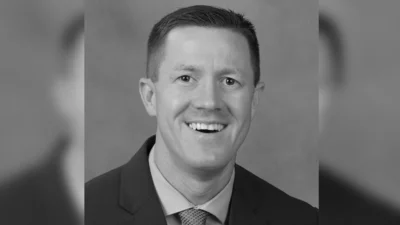Senator Bill Cassidy | Sen. Bill Cassidy Official Website
Senator Bill Cassidy | Sen. Bill Cassidy Official Website
WASHINGTON – U.S. Senator Bill Cassidy, M.D. (R-LA) delivered a speech on the U.S. Senate floor highlighting rising National Flood Insurance Program (NFIP) premiums in Louisiana and across the country. He called on Congress to take action to make the NFIP affordable again and address Risk Rating 2.0. This is the fifth installment of a series of Senate floor speeches Cassidy is using to focus attention on flood insurance costs.
“A few months ago, I shared several stories my team and I have heard from Louisianans about the issue. Their stories matter. These are the stories of Americans struggling to get by. And their voices deserve to be heard. So I am back today to share a couple more,” said Dr. Cassidy.
“We’ve seen flooding in states that don’t typically make you think ‘flooding’,” continued Dr. Cassidy. “You may be surprised to hear that Ruidoso, New Mexico—a small village in south-central New Mexico—has faced 13 flash flood emergencies since June 19 of this year due to runoff from heavy rain. On July 17, homeowners in Nashville, Illinois were devastated when the town’s dam flooded and caused damage to dozens of homes. On May 24, Montana Governor Greg Gianforte issued an executive order declaring a statewide disaster in response to recent flooding in northern and central Montana. Residents of Appleton, Wisconsin also faced widespread damage from a flash flood earlier this month.”
“Every single member of this body has constituents who rely on the National Flood Insurance Program,” concluded Dr. Cassidy. “My team is working on a bipartisan solution that will roll back Risk Rating 2.0 and make flood insurance affordable and accountable again. Let’s find a way forward.”
In January, the U.S. Senate Banking Committee held a hearing on NFIP at the request of Cassidy, which highlighted the urgent need for Congress to act and featured a Louisiana witness.
Cassidy also participated in a roundtable hosted by GNO Inc., and the Coalition for Sustainable Flood Insurance before introducing the bill to hear from community leaders and advocates on the issue.
Cassidy traveled St Bernard Parish last August to talk with residents about their flood insurance premiums, resulting in the second episode of his series "Bill on the Hill."
Madam President,
The National Flood Insurance Program—or NFIP—was created to protect Americans and their families.
It covers 4.7 million American homes.
But NFIP fails to serve that core function when it becomes too expensive to afford.
FEMA’s new risk assessment system—Risk Rating 2.0—has blindsided homeowners with unprecedented spikes in their insurance premiums, and it was never passed by Congress.
I speak to constituents constantly about flood insurance.
A few months ago, I shared several stories my team and I have heard from Louisianans about the issue.
Their stories matter. These are the stories of Americans struggling to get by.
And their voices deserve to be heard.
So I am back today to share a couple more.
One resident in New Orleans who is nearing retirement told us she was struggling to keep up with rising premiums because they no longer allowed her home to be grandfathered in.
Her house was built in 1987 up to the standards under the flood map at that time; she did everything right.
Her house flooded during Katrina—like so many did—but again, she was saved from skyrocketing premiums until Risk Rating 2.0.
Now she tells us her future premiums will eventually rise above eight thousand dollars.
Her hazard insurance is almost twelve thousand dollars and growing each year.
She wrote: “There is no way I will be able to retire and afford these premiums; I can hardly pay them now!”
Her story is one that’s shared by many homeowners in our state.
I heard from another woman in Central City, Louisiana just outside Baton Rouge.
It’s an area that doesn’t often flood.
As she put it: In order for her house to flood, all Central City would need underwater.
But when Risk Rating 2.0 hit, she learned her premium would quadruple if she opted for coverage.
So she dropped her coverage altogether.
That’s what happens when people face dramatically higher rates: if they don’t flood or can’t afford insurance why would they keep coverage?
When this happens policyholder pool shrinks leading program into actuarial death spiral.
FEMA forecasted over twenty percent policyholders leaving within ten years setting program collapse
Not only wealthy paying more sixty-two percent policies parishes counties median income below national average fifty-four thousand dollars hardworking families not millionaires beach homes
Not just Louisiana families affected here states seen flooding typically think Virginia Missouri North Carolina South Carolina New York New Jersey Florida Alabama Mississippi Pennsylvania Texas California Louisiana had billion claims since nineteen seventy-eight
Those states dark yellow hardest hit forty-four states had over fifty million total claims every state least five million claims
You may surprised hear Ruidoso New Mexico faced thirteen flash floods since June nineteenth due runoff heavy rain July seventeenth Nashville Illinois dam flooded damaging dozens homes May twenty-fourth Montana Governor Greg Gianforte declared statewide disaster response recent flooding northern central Montana Appleton Wisconsin widespread damage flash flood earlier month
New Mexico Illinois Montana Wisconsin not places typically think flooding national issue coastal
To colleagues representing those states all colleagues come talk conversation every member has constituents relying National Flood Insurance Program working bipartisan solution roll back Risk Rating two point zero make affordable accountable again Let find way forward
###






 Alerts Sign-up
Alerts Sign-up